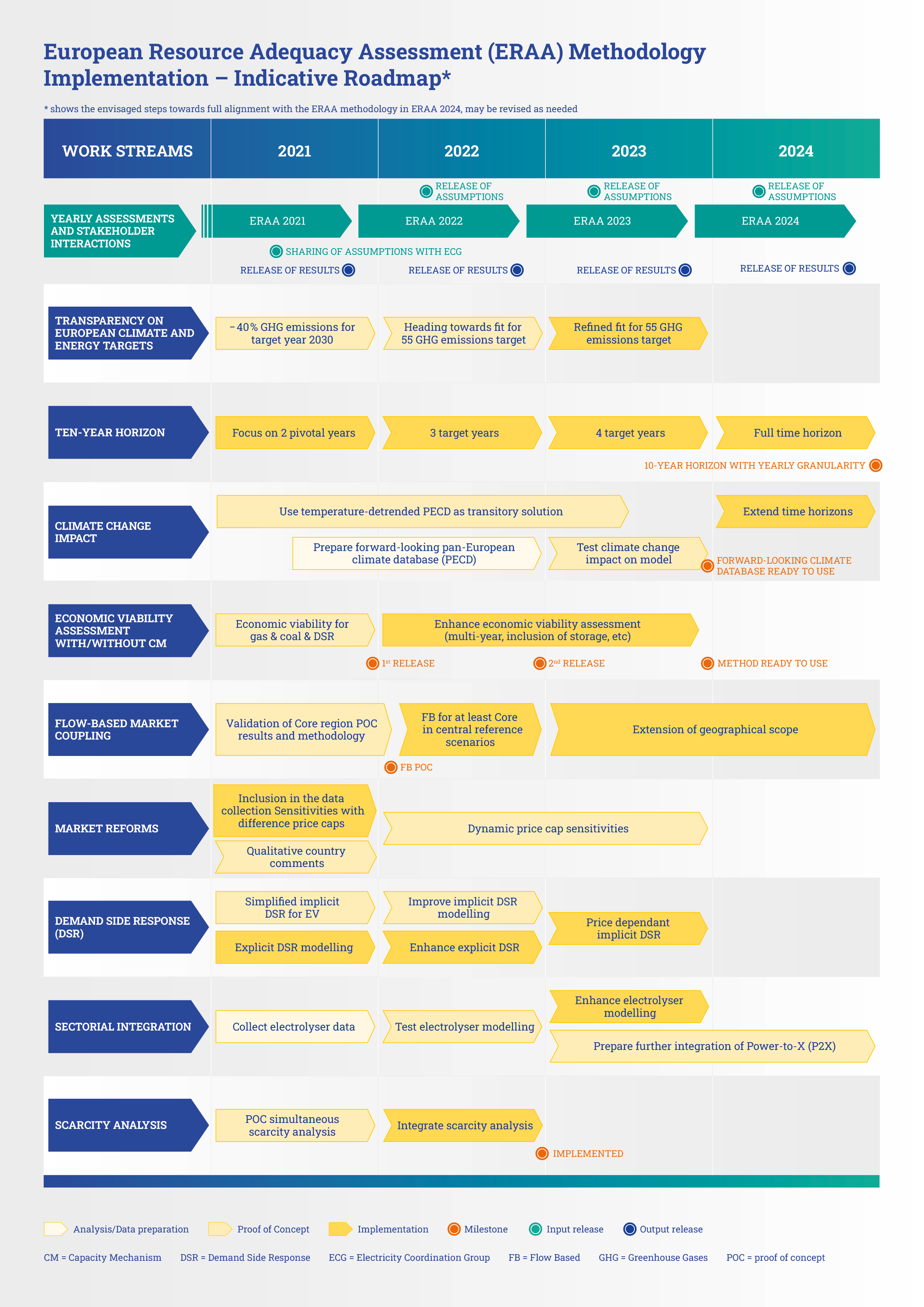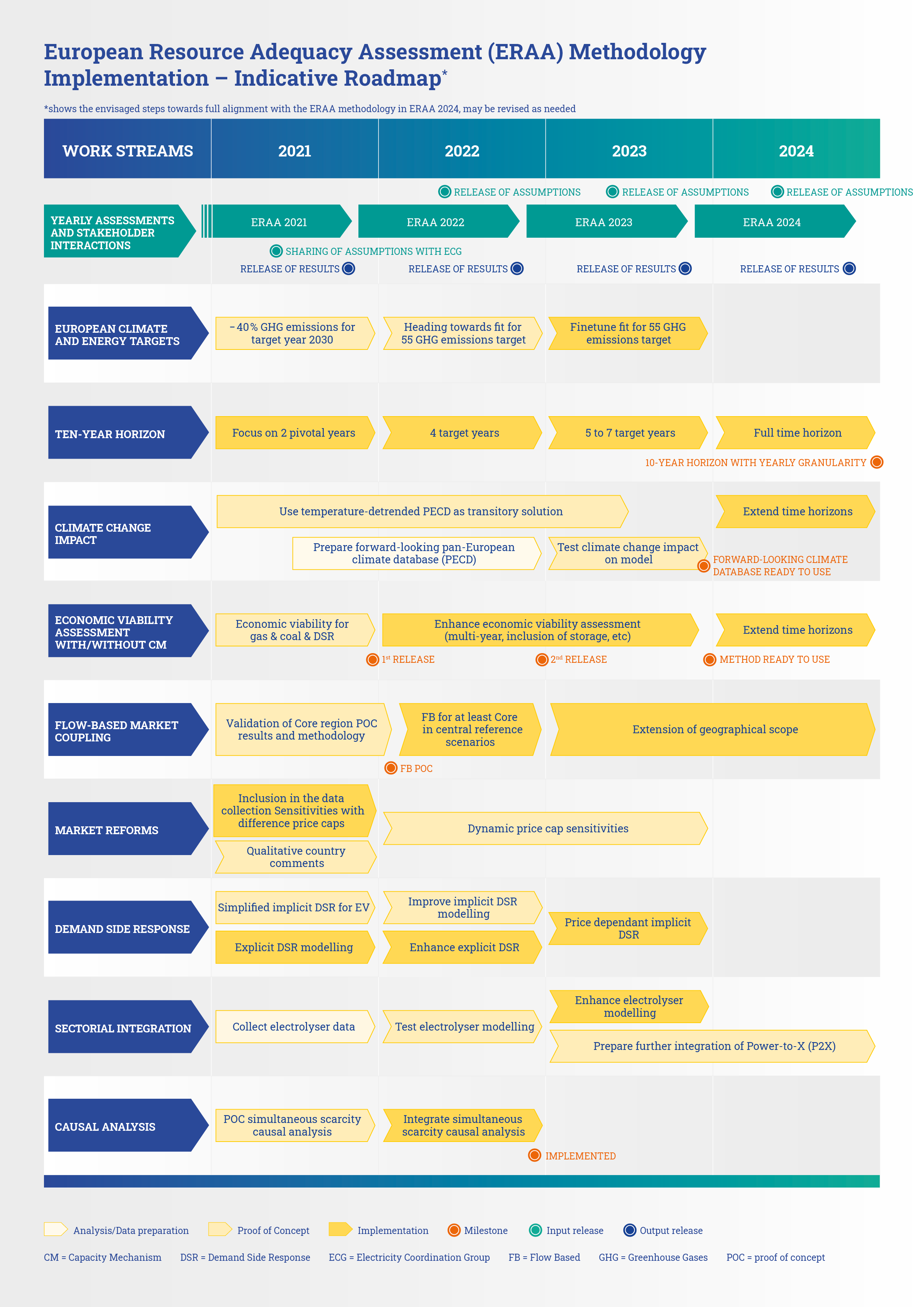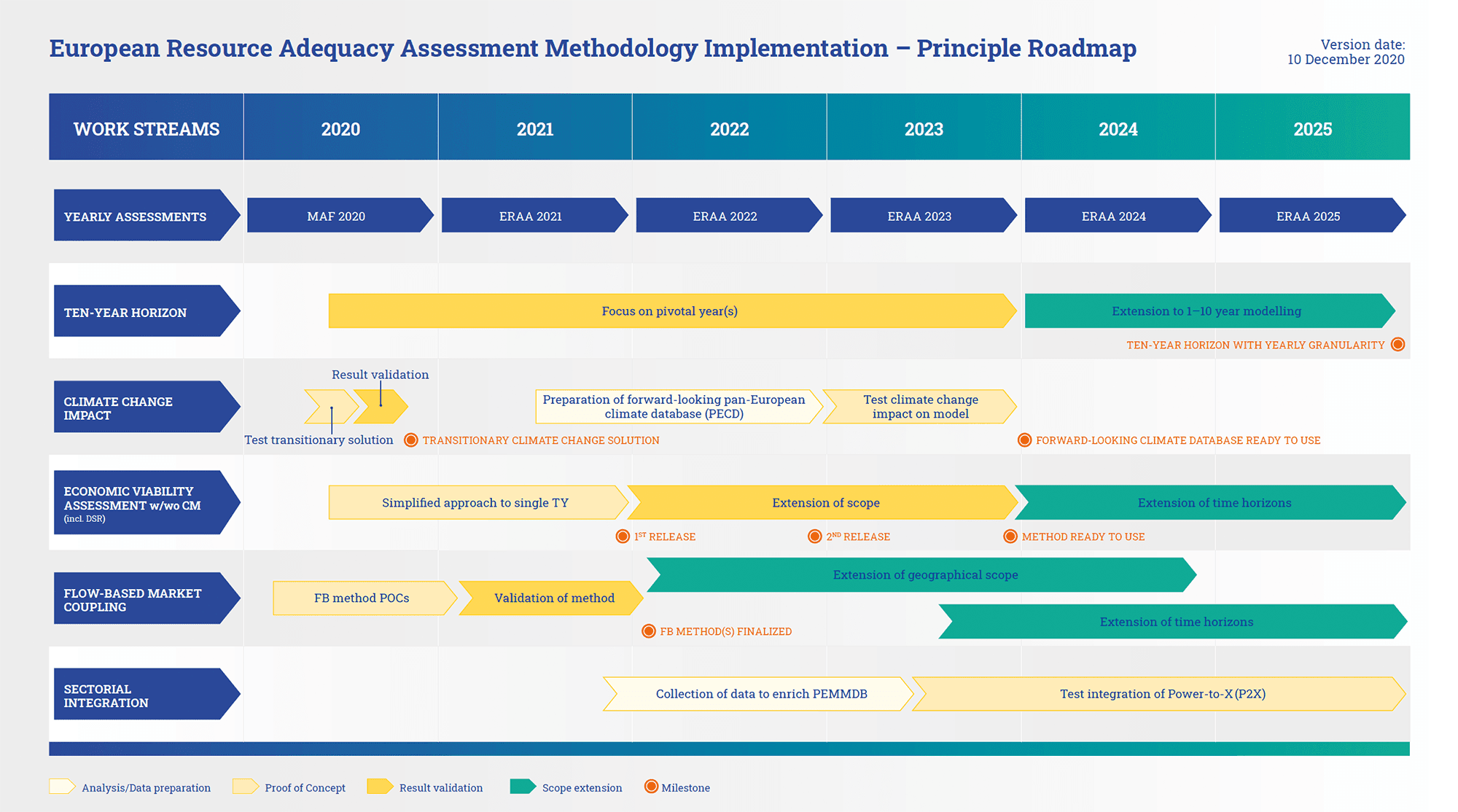With the integration of Europe’s electricity markets, integration of large quantities of renewable capacity and shifting demand patterns, resource adequacy will be a major focus for decades to come. ERAA aims to support an efficient and interconnected energy system by measuring the system’s ability to maintain security of supply in a wide range of scenarios accounting for climate change and the rapid increase in renewables installed capacities.
Implementation Roadmap
This measurement will increasingly be used to determine which interventions, including CMs, are required to ensure the security of supply of Europe’s electricity system in the long run. This, in turn, will support Europe’s energy transition, proactively addressing the challenges while delivering secure and affordable energy to citizens and industries.
The stepwise approach endorsed by ACER on 2 October 2020 is the basis for the evolution and implementation of ERAA. Of particular focus will be the further development of the EVA and FB analysis, which together should add significant robustness to the findings of the report. Already, hundreds of man-hours and thousands of computing hours have been spent towards the development of these tools.
What are the upcoming challenges and future steps for resource adequacy assessments as required under the CEP?
The CEP requires the introduction of additional methodologies and features, such as an EVA, scenarios with CMs, the impact of climate change on input data, and FB representation of the grid, thus introducing significant challenges and improvements for pan-European and regional adequacy assessments.
Alongside the delivery of ERAA, ENTSO-E delivered an implementation roadmap with clear steps. This roadmap is indicative and will be updated at least on a yearly basis, considering the best available approaches and know-how. It outlines how topics such as the role of electrolysers and DSR, alongside latest policy developments will be factored into ERAA.
Regarding policy developments, it is important to stress that ongoing negotiations on the EU’s Fit for 55 Package will lead to changes in Europe’s climate and energy objectives for 2030 that have to be translated to national estimates – changes which will be factored into future editions.







